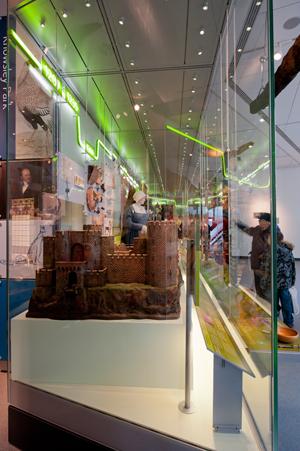1066 and all that!

Friday 14 October 2016 marks the 950th anniversary of the most famous date in British History: 1066, the Battle of Hastings. The event took place in East Sussex, near the town of Battle, where Battle Abbey was established to commemorate the clash between the Normans and the Saxons. The date 1066 is very well-known, and the battle is recorded in detail in the Bayeux Tapestry, but did the events of that year have any impact on people’s lives in Merseyside?
The Battle
The battle was one for power: the throne of England. The death of Harold Godwinson, famously hit in the eye by an arrow during the battle, opened the way for the Norman Duke, William the Bastard to gain the rather more dignified title of William the Conqueror, and to become King. William’s predecessor, King Edward probably intended for William to become King. When King Edward sends his brother in law Harold on a diplomatic mission a convoluted story of shipwreck, capture, espionage, and conflict unfolds, all recorded on the Bayeux Tapestry. Harold eventually swears an oath to enable William to become King of England, but when King Edward dies Harold tries his luck and declares himself King. The Battle which ensues is recorded in gory detail on the tapestry.
After the battle was over the Norman administration began, and land was granted to prominent Normans. Much of Lancashire was granted to Roger de Poitou, a cousin of William I, and he is described as Lord of West Derby and Manchester by the time of Domesday. He administered the region through a network of castles.
Castles
The military activities of the Normans included building castles, the construction of a mound ‘motte’ for a motte and bailey castle at Hastings is shown on the tapestry. Castles of this type were constructed all over the country. In this region we know of examples at West Derby and Newton le Willows. These have been investigated archaeologically, but are now primarily recorded in local streetnames, Castlesite Road and Castleview Road, West Derby and Castle Hill, Newton-le-Willows. A castle was built adjacent to the degraded Roman defences in Chester in the 1070s. Another surviving example is Halton Castle.
West Derby Castle: The Norman motte and bailey castle was situated at West Derby because that was already an important administrative centre. The site was excavated in 1927 by Professor Droop of the University of Liverpool. Excavations revealed well-preserved wood interpreted as part of the drawbridge, and late 13th-14th century pottery, metal, leather and horn or bone. Documentary sources tell us a little about the castle too. The Pipe Rolls of 1213 describe the castle being inhabited by 140 soldiers, 10 knights and 10 bowmen.
 Model of Liverpool Castle on display in History Detectives, Museum of Liverpool Copyright Mark McNulty
Newton Castle: A motte and bailey castle at Newton-le-Willows has been the subject of two excavations, one in the 1840s and another in the 1980s. The scant records of the Victorian excavation suggest that evidence was revealed that the motte was built on a far earlier burial mound.
1066 in Liverpool
Liverpool was not a large or important settlement at this time, it was a small fishing village. It was some decades before it would gain a letters patent, in 1207, when King John wanted base for his military campaigns in Ireland. A castle was built in Liverpool around 1235, a model of which can be seen in the Timeline in the Museum of Liverpool. The Norman census, ‘domesday’ doesn’t list Liverpool, instead including 6 berewicks within West Derby, accounting for 128 households within the Hundred of West Derby.
1066 wouldn’t have had profound immediate impacts on everyday life in the north west. The sheriffs controlling each shire retained much power, and the Church continued to be influential. Lordship transferred to Roger de Poitou, as gradually the land-ownership around the country was transferred to Norman nobility. New castles would have been significant landscape features. Gradually material culture changes, and new types of objects start to appear in the archaeological record, recording how lifestyles evolved.
Model of Liverpool Castle on display in History Detectives, Museum of Liverpool Copyright Mark McNulty
Newton Castle: A motte and bailey castle at Newton-le-Willows has been the subject of two excavations, one in the 1840s and another in the 1980s. The scant records of the Victorian excavation suggest that evidence was revealed that the motte was built on a far earlier burial mound.
1066 in Liverpool
Liverpool was not a large or important settlement at this time, it was a small fishing village. It was some decades before it would gain a letters patent, in 1207, when King John wanted base for his military campaigns in Ireland. A castle was built in Liverpool around 1235, a model of which can be seen in the Timeline in the Museum of Liverpool. The Norman census, ‘domesday’ doesn’t list Liverpool, instead including 6 berewicks within West Derby, accounting for 128 households within the Hundred of West Derby.
1066 wouldn’t have had profound immediate impacts on everyday life in the north west. The sheriffs controlling each shire retained much power, and the Church continued to be influential. Lordship transferred to Roger de Poitou, as gradually the land-ownership around the country was transferred to Norman nobility. New castles would have been significant landscape features. Gradually material culture changes, and new types of objects start to appear in the archaeological record, recording how lifestyles evolved.
